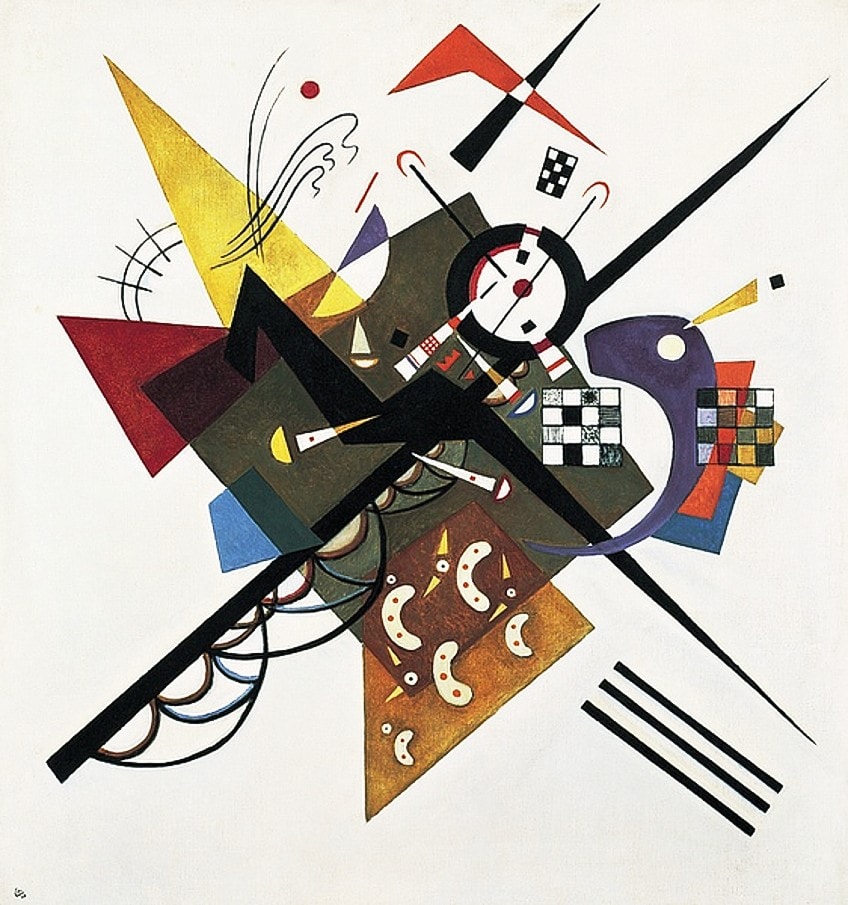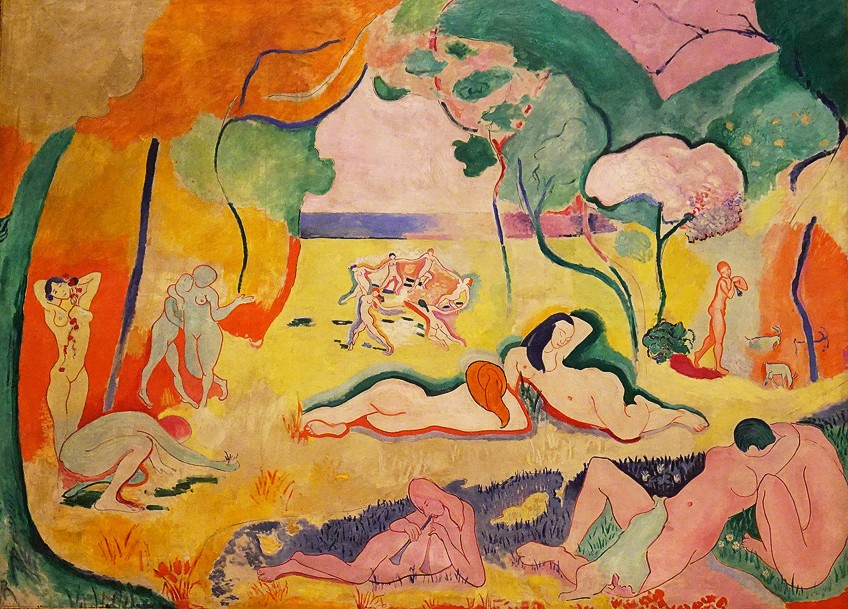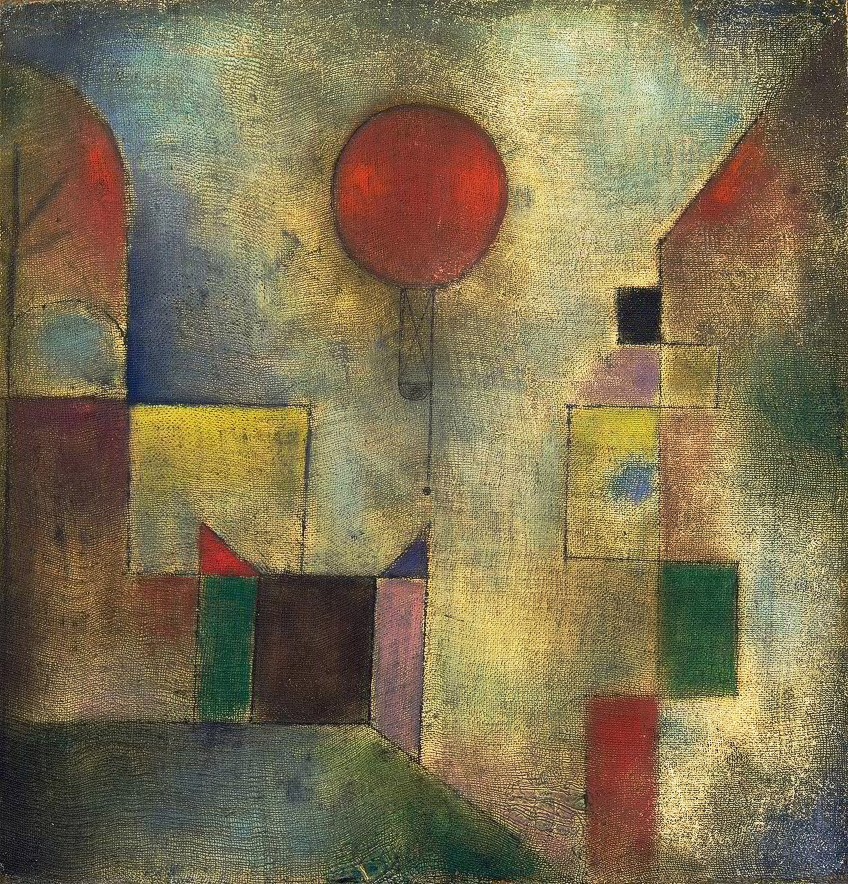Shape in Art – Explore the Importance of Shape in Art
Shape is an art element that provides us with the basic structure of objects and subjects in art. Even the most randomly executed marks carry some sort of shape. Can you imagine a shapeless world? Impossible! This article will take you through shape as an element of art as well as a few examples of shape in art.
Contents
Shape: An Element of Art
The elements of art are considered to be the foundational aspects that inform questions about what art means and how one should interpret an artwork. Apart from shape, there are six other elements of art, including line, texture, form, color, value, and space. To jog your memory of the basic art elements, we have outlined a summary of the different art elements in the table below.
| Art Element | Definition |
| Line in art | A line is defined as the trajectory created between two points. This element can differ visually in terms of shape, length, and width. |
| Texture in art | Texture implies the tactile sensation evoked by an artwork. It makes use of a visual stimulus that visually mimics the surface of the desired object. |
| Form in art | Form is defined by the presence of height, width, depth, and volume enclosed by two-dimensional features that render a three-dimensional figure. |
| Color in art | Color refers to its three attributes, namely, hue, value, and intensity (or chroma). |
| Value in art | Value is the darkness (shadow) or lightness (brightness) of a color and can be measured by the value scale. Value is also associated with economic, social, and political contexts. |
| Space in art | Space consists of positive and negative space. Space refers to the relationship between a main subject and the artwork as a whole. |
| Shape in art | Shape is used to create two and three-dimensional objects. It is defined by its confines and is limited to width and length. |
What Is Shape in Art?
Shape is an art element that is defined by other elements such as line, space, color, texture, value, and form. Shape is understood as two-dimensional and contains a width and length. Shapes can be used to create different effects and transition illustrations from a two-dimensional rendering to a three-dimensional rendition of an object.
Almost everything around us has a shape and when combined with form, shape allows for that level of three-dimensionality to appear.

This can be seen in sculpture and drawing, through perspective, curvature, form, and texture. Below we will take a closer look at the different types of shape in art as well as the importance of shape in art alongside some famous shape art examples.
Types of Shape in Art
Shape can be visually rendered in multiple ways through almost all art mediums. There are different types of shape in art and each is used to either emphasize a particular aspect of an artwork or draw attention to an underlying theme. Shape is also used to give an artwork character and can contribute to the defining artistic style of an artist.
Below are just a few different types of shapes that feature in art.
Geometric Shapes
Geometry is a primary division of mathematics that deals with dimensions, angles, positions, and most importantly, shapes of objects and things. You cannot discuss shape without mentioning geometry since shape is a property of space, which also happens to be another art element.
Geometric shapes, also known as regular shapes, are defined with clear boundaries and are usually precisely measured.

Shapes that feature under the category of geometric shape art include rectangles, squares, triangles, circles, and many other different shapes. Geometric shapes in art are commonly associated with the genres of abstract art and minimalism.
Organic Shapes
On the other end of the spectrum, organic shapes are less rigid and are not clearly defined. This means that they have no set boundaries and seem as though they have no intended shape. Also referred to as free-form shape, the organic shape is often characterized by flowing, curved lines and markings that appear amorphous and amoeba-like.
Shapes that appear more organic are also referred to as biomorphic shapes.
Negative and Positive Spaces in Shape
The next category of understanding shapes comes from understanding how we can construct an image based on shape and the presence of negative and positive space. Say for example you are drawing an image of a table with four legs.
The positive space is filled in with the imaginary “wood” of the table while the negative space around it is what defines the outer shape of the table.

In effect, shapes that are characterized by objects are called positive shapes and shapes made clear around objects are called negative shapes (empty spaces). You might also construct your table by envisioning the table to be either rectangular or square with shorter, thinner rectangular legs on each corner.
This is where you apply geometric shapes to help visualize an object.
Light and Dark Shapes in Art
As with the influence of positive and negative space on shape, brightness and darkness also play a role in determining shape. This is seen evidently in the presence of shadow and light – light and dark shapes. The abstract organization of light and dark shapes is known as notan, which is considered an important design element.
The slightest change in light can produce shapes even when there is absolutely zero change to the object or subject.
An abstract notan design is achieved through the simplification of light and dark colors into two distinct values; black and white. An example of this can be seen in Girl with Black Cat (1885), which is a painting by Giovanni Boldini.
Abstract Shapes
Abstract shapes are different from organic shapes. While you may think that abstract shapes have no organization, many abstract shapes are considered to be conceptual shapes that are created according to a universal or given language. In other words, these shapes are considered to be understood by all. You can identify abstract shapes by general icons that are found across the world. This can be in lavatories, escalators, vehicles, road safety signs, and even disability icons.
Arranged in different ways, abstract shapes make for powerful and widely accepted designs.

The Importance of Shape in Art
Now that you have a better idea of the different types of shape in art, we can now narrow in on the importance of shape in art. At the primary level, shape is important for defining the focus of an object or highlighting its absence. When different types of shape are combined in art, as in the works of Henri Matisse, we are confronted with unique compositions informed by other art elements like color and space.
In the broader context of human development, learning about the different types of shapes and being able to construct visual images out of shapes is important for early childhood development.
By introducing shapes into the early stages of education, you also allow for the development of a child’s ability to observe and compare. The observation of objects that are the same versus objects that are different can also aid the ability to learn how to read symbols and eventually write. This is also an excellent way for younger kids to explore art and develop an appreciation for the basic elements. Who knows? Your kid may be the next generation of great masters. Understanding the role of shape in art goes beyond the surface understanding of defining objects and constructing images.

Shape also helps guide the viewer’s eye into an artwork through the use of different variations in shape that make use of negative and positive space, as well as shadow and light. Aside from the fine art realm, shape is also a foundational element in design since it assists designers to organize information while maintaining a visually appealing aesthetic. This is not only exclusive to design but it is also part of the production process behind artwork.
Design and art have been intertwined for centuries; therefore, the principles and elements do share close purposes and applications.
Shape is an element of art that also brings texture, a sense of depth, rhythm, and movement to an artwork. While it can be used to bring a subject into focus, many artworks contain multi-point perspectives, which involve multiple subjects. Applying geometric shape in this sense is a great tool for an artwork with multiple subjects.
Famous Shape Art
Shape as an element of art and design is important to the daily organization of universal signs, which also directs our movements. Shape in art carries a direct psychological influence and the ability to influence the way we look at an artwork and the mood of an artwork. Below are just a few famous shape art examples showcasing the varied applications of shape in art.
Madonna del Prato (1505 – 1506) by Raphael
| Artist | Raffaello Sanzio da Urbino (1483 – 1520) |
| Date | 1505 – 1506 |
| Medium | Oil on board |
| Dimensions (cm) | 113 x 88 |
| Where It Is Housed | Kunsthistorisches Museum, Vienna, Austria |
Also known as the Madonna in the Meadow and Madonna with the Child Christ and John the Baptist (1505 – 1506), this painting is a classic example of the use of shape to arrange an image. Other terms associated with this use of shape include the use of pyramidal composition, which is a common method to organize subjects in artwork and photography.
It refers to the positioning of a subject in a pyramid-like shape with the head placed on the top in the vertical plane and the rest of the body expanding for width below.

This enables the viewer to follow the subject and view the painting with ease. Other examples of shape in art include works such as Three Musicians (1921) by Pablo Picasso, Squares with Concentric Circles (1913) by Wassily Kandinsky, Las Meninas (1656) by Diego Velázquez, and Darkytown Rebellion (2001) by Kara Walker.
The Church at Moret in the Morning Sun (1893) by Alfred Sisley
| Artist | Alfred Sisley (1839 – 1899) |
| Date | 1893 |
| Medium | Oil on canvas |
| Dimensions (cm) | 65 x 81 |
| Where It Is Housed | Musée des Beaux-Arts de Rouen, Rouen, France |
The Church at Moret in the Morning Sun (1893) is a perfect example of the use of light and dark shapes, or shadow and light, to highlight the sunlight that hits the top half of the church in the morning. Sisley also combines large shapes, as seen in the church structure, with smaller shapes, as witnessed by the small figures on the bottom left and right of the painting.
Sisley also uses shape to clearly represent the corner of the church, as if the viewer were taking a turn around the bend.

Le Bonheur de Vivre (1905 – 1906) by Henri Matisse
| Artist | Henri Émile Benoît Matisse (1869 – 1954) |
| Date | 1905 – 1906 |
| Medium | Oil on canvas |
| Dimensions (cm) | 176.5 x 240.7 |
| Where It Is Housed | Barnes Foundation, Philadelphia, Pennsylvania, USA |
The Joy of Life (1905 – 1906) by French master Henri Matisse displays the use of organic and irregular shape in art. The painting is also associated with one of the most recognized paintings signifying the emergence of early modernism. The spatial distortion that Matisse employed was not well received by the Salon, as was expected.
However, his vivid use of color coupled with his fantastical application of shape to distort the space truly delivered the “shock-factor” that the artist’s contemporary, Pablo Picasso, hoped to outdo.

Red Balloon (1922) by Paul Klee
| Artist | Paul Klee (1879 – 1940) |
| Date | 1922 |
| Medium | Oil on chalk-primed gauze on board |
| Dimensions (cm) | 31.8 x 31.1 |
| Where It Is Housed | Solomon R. Guggenheim Museum, New York |
The Red Balloon (1922) by Paul Klee showcases the use of geometric shapes in painting. Here Klee uses his signature abstract pictorial visual language by including geometric shapes such as the circle, square, and rectangles to create an abstract cityscape.

Shape as an element of art is crucial to the foundational building blocks of art and design. By studying the use of shape in art, you can gain a deeper appreciation for the way that artists construct some of your favorite artworks.
Frequently Asked Questions
What Is Shape in Art?
Shape is one of the basic elements of art that is defined by its confines and the presence of width and length. Shape is used to form both two and three-dimensional objects.
What Is the Importance of Shape in Art?
Shape in art is important for rendering the structure and overall visual image of objects or subjects in an artwork. Shape, in conjunction with other elements of art, helps give an artwork definition, texture, depth, and movement. Shape also helps guide the viewer’s eye to view the subject of an artwork with ease.
What Are Famous Shape Art Examples?
Some famous shape art examples include artworks such as Virgin of the Rocks (1483) by Leonardo da Vinci, A Sunday on La Grande Jatte (1884) by Georges Seurat, La Orana Maria (1891) by Paul Gauguin, and Broadway Boogie-Woogie (1942 – 1943) by Piet Mondrian.
Jordan Anthony is a Cape Town-based film photographer, curator, and arts writer. She holds a Bachelor of Art in Fine Arts from the University of the Witwatersrand, Johannesburg, where she explored themes like healing, identity, dreams, and intuitive creation in her Contemporary art practice. Jordan has collaborated with various local art institutions, including the KZNSA Gallery in Durban, the Turbine Art Fair, and the Wits Art Museum. Her photography focuses on abstract color manipulations, portraiture, candid shots, and urban landscapes. She’s intrigued by philosophy, memory, and esotericism, drawing inspiration from Surrealism, Fluxus, and ancient civilizations, as well as childhood influences and found objects. Jordan is working for artfilemagazine since 2022 and writes blog posts about art history and photography.
Learn more about Jordan Anthony and about us.
Cite this Article
Jordan, Anthony, “Shape in Art – Explore the Importance of Shape in Art.” artfilemagazine – Your Online Art Source. September 8, 2022. URL: https://artfilemagazine.com/shape-in-art/
Anthony, J. (2022, 8 September). Shape in Art – Explore the Importance of Shape in Art. artfilemagazine – Your Online Art Source. https://artfilemagazine.com/shape-in-art/
Anthony, Jordan. “Shape in Art – Explore the Importance of Shape in Art.” artfilemagazine – Your Online Art Source, September 8, 2022. https://artfilemagazine.com/shape-in-art/.



